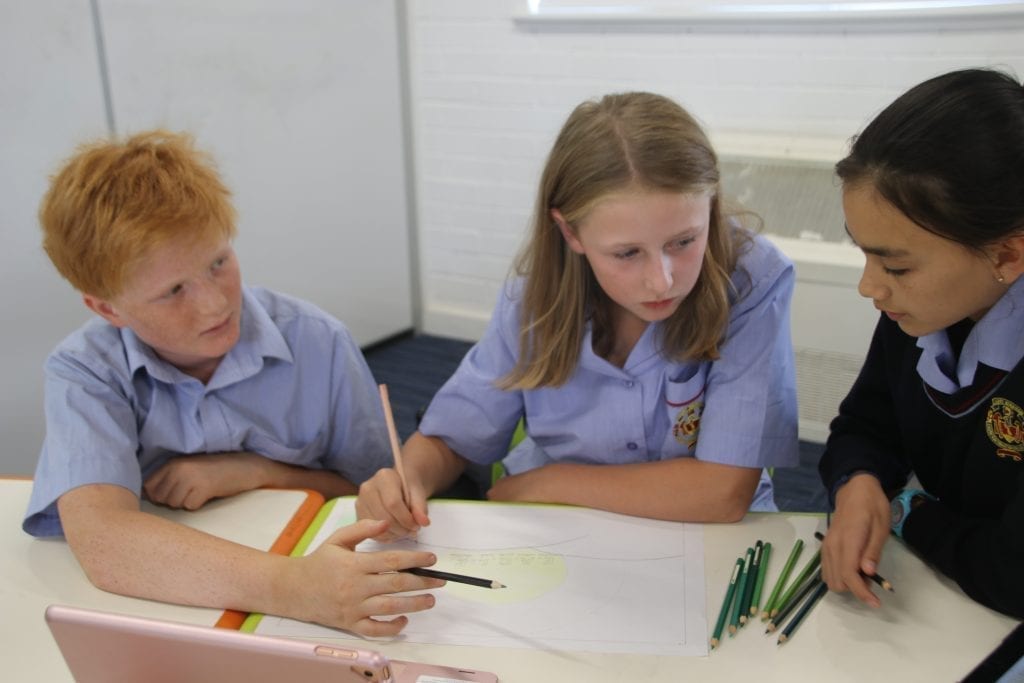James Sheahan Catholic High School in Orange, NSW, is one of the first Catholic schools to sign up to Quality Teaching Rounds.
The secondary school of 1,080 students and 90 teachers has embedded QTR in its Annual School Improvement Plan, with four teachers a term taking part and aiming to have all teachers trained by 2024.
Principal Peter Meers said QTR fits with a professional learning community focus on collaboration and the use of data to inform practice.
“We know from research that to make a difference to students’ learning, overwhelmingly, it is the quality of teaching that’s going to impact their success,” Peter said.
He liked that QTR takes place within the school, does not require teachers to travel and is suited to all subject areas and student stages.
“It is not based on the clientele you have and their socioeconomic status, and does not require ultra-experienced or ‘magic’ teachers,” Peter said. “Any teacher can improve their pedagogy, and this model has very clear definitions of the elements of quality teaching.”
Peter said the Quality Teaching Model was ‘the most powerful framework’ he had come across in 33 years of teaching in state and Catholic schools.
“Teachers of 20 or 30 years and teachers of two or three years are equally excited, and learning so much from the conversations they are having about their own teaching and how they can help each other,” he said. “I can see the light in their eyes.”

Assistant Principal Michael Tilston said QTR was a ‘slow-burn exercise’ aimed at improving student outcomes, including gaining more Band 6 results in the HSC.
“One of our challenges is student engagement,” Michael said. “We have great kids and great teachers, but there is a feeling that some of our students are happy to let life just happen around them.
“We’ve focused on student engagement before, but now we are turning the lens the other way and focusing on teaching, to see if improving the quality of teaching will spur on student engagement.”
Instructional Leader Jennifer Wickham said staff had been generally welcoming of the approach.
“Our focus is on reflective practice, and how we can be continually learning, and QTR provides us with a structured way of lesson observation and support,” she said.
Jennifer described a turnaround in one initially reluctant teacher.
“I had one staff member say, ‘I’m only doing this because I like you, Jen,’ but then after doing the Rounds he said, ‘I want to thank you, it’s been a really valuable experience and a really positive thing’.”
She said teachers had found QTR easy to understand and the process straightforward to implement, although there had been debates about what constitutes [explicit] quality criteria.
“Those debates have been good, as they have helped us focus on how we teach and what we want students to get out of that teaching,” Jennifer said.
Teacher Nella Clarke said that she had really benefited from being part of the structured process of QTR; having her teaching evaluated in a supportive environment and being in other teachers’ classrooms.
“It’s been an important reminder that we have some really good teachers here,” she said.
Nella said she had a new appreciation of the importance of making lessons significant to students’ day-to-day lives.
For example, in a Year 9 visual art class in which students were asked to make a microscopic drawing of a pattern in nature, Nella said she identified a missed opportunity in her teaching in that she could have discussed how patterns are everywhere, and how they might be culturally significant, drawing on elements of background knowledge and connectedness.



